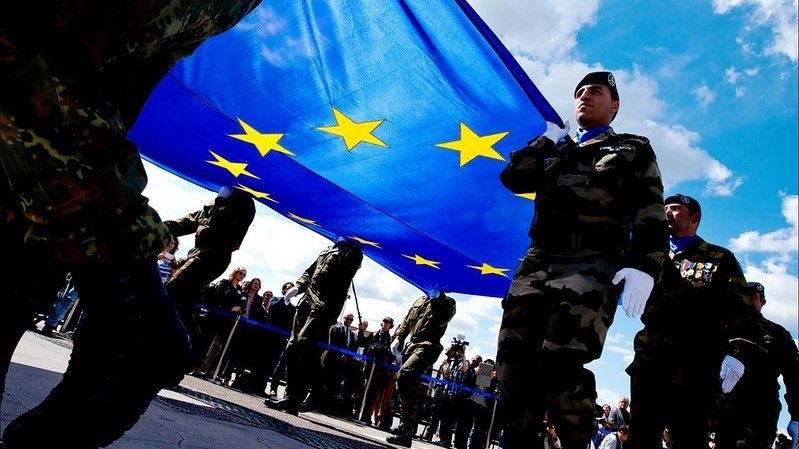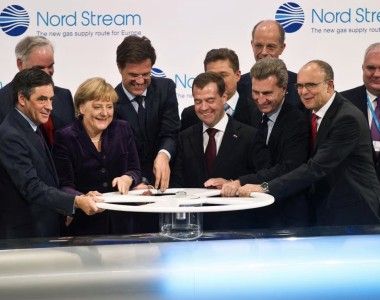European Defence Fund: Division of EUR 1 bn. What’s the Polish Share?

The European path towards innovation in defence is to be supported by the European Defence Fund, among other assets. The assignment of financial means for the first projects has been completed now. Those projects would refer to almost any aspect of the domain of contemporary defence, ranging from conventional operational domains, through cyber, to space. The international consortia also involve entities from Poland that have shown off their expertise and the capacity to work with European partners. The EDF projects are to be in sync with the activities undertaken as a part of PESCO.
Last month projects have been designated, that would be financed via EDF. Ultimately, 61 European initiatives, out of 142 submitted projects referring to defence-related developments would gain access to funding of EUR 1.2 bn. 700 entities from numerous states, Poland included, would get engaged in this effort. Whereas, France (178), Italy (156), Spain (147), and Germany (113) have submitted the largest number of entities that would be engaged in the EDF-supported projects. Statistically, the smallest number of entities engaged in projects pursued through EDF comes from Slovakia (2), Ireland (4), Croatia, Luxembourg (6), and Hungary (7). Poland would be represented in 31 cases, as the official list of the awarded projects states.
Margrethe Vestager stated that some of the high-quality projects selected show that defence industry cooperation in Europe may take place on a large scale. Thierry Breton, Commissioner for the Internal Market, said that thanks to the investment, in an amount of 1.2 bn. euros, concerning 61 European defence cooperation projects, the EDF can produce specific results on the path towards a more integrated European defence industry, supporting innovation and providing the latest capabilities to the Armed Forces. Breton said that thanks to EDF, European defence cooperation becomes a norm and that the funds are spent far more efficiently when used collectively. He added that this brings benefits both to the member states, and the European defence industry as well, referring both to major players, as well as the smaller businesses.
The official release states that EDF makes it possible to establish a community support scheme for a broad range of projects and undertakings aimed at enhancing the defence capabilities in Europe. EDF is to refer to new generation aerospace technologies, but also to land and naval domains. Whereas the EDF is also making the investment in breakthrough technologies, ranging from cloud to AI, semiconductors, space systems, new materials, or 21st Century medical support assets. The ambition behind EDF is to support SMEs and start-ups, allowing for the enhancement of innovation in Europe. SMEs constituted 43% of the participants during the first assignment of the funds.
Read more
At the same time, the EDF claims that there are 18 different entities on average, assigned to each of the projects, hailing from 8 EU member states at the minimum. This is a demonstration of a community-driven effort - and it also involves Norway - a non-EU country. Apart from the broad cooperation between the EU member states, or rather businesses associated with those states, important synergy with the PESCO projects has also been mentioned (PESCO is continuous structural cooperation initiated by the member states, not industrial or R&D entities. It has been stressed that 15 projects awarded within this round of EDF funding can work in sync with the PESCO development projects, thus resulting in a key synergy effect.
When it comes to the current tranche of funding (following the submission of requests opened in September last year), projects categorized as follows have been selected: air warfare, air/missile defence, information superiority, cyber, digital transformation, breakthrough technologies, energy and environment, land technologies, materials and components, medicine and CRBN, naval technologies, open competition for SMEs, within the scope of innovative and prospective defence solutions (largest number of submission receiving financial means from EDF), protection and security, sensors, space.
Whereas, out of the 1.2 bn. euros most money (EUR 189 million) would be used to support three air warfare projects: EICACS, EPIIC, and ENGRT. More than EUR 100 million have been assigned to the land operations category - EUR 154.7. 103.5 million euros have been assigned to naval operations, while 100 million have been assigned to air/missile defence. The least money was assigned to the cyber (EUR 37.9 million) and sensors (EUR 38 million) categories. As emphasized, the Commission has already begun preparing agreements for some of the awarded consortia. The official decision on the assignment of the subsidies and the conclusion of the agreements involving the selected entities have been scheduled to happen before the end of this year.
When it comes to the Polish share in the EDF-funded projects this year, one should note that the EU HYDEF air/missile defence project involves the Air Force Institute of Technology, and the Łukasiewicz Research Network-Institute of Aviation. The project deals with the matter related to neutralization of the potential hypersonic threats (European Hypersonic Defence Interceptor).
In the cyber domain, meanwhile, ASSECO is engaged in a project related to enhanced cyber defence capabilities and cyber domain AI incident management. This is happening within the framework of the EU-Guardian project. The Polish entities also participate in projects awarded in the digital transformation category. The consortium responsible for the EDOCC (European Defence Operational Collaborative Cloud) project involves the Polish EXENCE S.A. company. Also, a project related to AI-based learning, named FaRADAI, involves the Polish SKA POLSKA Sp. z o.o. company.
When it comes to breakthrough technologies for radars, the Warsaw University of Technology is involved in the High Frequency Over The Horizon Sensors’ Cognitive Network (iFURTHER) initiative. The project is aimed at developing sensors that could potentially work in the air and naval domains. In the NEUMANN programme, related to alternative new generation air warfare systems propulsion, the Łukasiewicz Research Network-Institute of Aviation, and the Ignacy Łukasiewicz Rzeszów University of Technology play a major part.
Some Polish entities also contribute to EDF-awarded projects tied to land domain technologies. In the COMMANDS project, the goal is to integrate manned and unmanned platforms for convoy operations. This consortium involves the Military University of Technology. The NEWHEAT project (New European Warhead Technologies) is aimed at enhancing the technologies related to PGM warheads and involves the WITU Military Institute of Armament Technology.
Polish Military Medical Institute meanwhile, participates in the awarded COUNTERACT initiative. This project concerns the development of European capabilities within the scope of countering CRBN threats.
When it comes to projects aimed at boosting innovation and establishing future defence competencies for SMEs, the SPRING (Space Response to Risk & Integration with Ground segment) project involves the Sybilla Technologies Sp. z o.o. company. The IntSen2 (Proactive automatic imagery intelligence powered by artificial intelligence exploiting European space assets) project meanwhile involves the Polish Academy of Sciences and its Space Research Centre. The Mini-BOT programme, meanwhile, involves two Polish entities, namely the Łódź University of Technology, and VIGO System S.A.
Read more
When it comes to military mobility, the Poles are engaged in the SDMMS (Secure Digital Military Mobility System) project, aimed at enhancing the information exchange between nations, when it comes to military movements. The SDMMS initiative involves the ITTI institute. ACHILE (Augmented Capability for High-End Soldiers) project, meanwhile, involves work on the management of infantry. It sees involvement on the part of ExoFrame Sp. z o.o., ITTI Sp. z o.o., SKA POLSKA Sp. z o.o., and the Military University of Technology.
Poland is also involved in two projects related to the sensors category - HEROIC and ARTURO. The HEROIC initiative (High-Efficiency Read Out Circuits) refers to technologies tied to IR sensors developed for optoelectronics and radars, and involves the Polish PCO S.A. company.
Meanwhile, the ARTURO (Advanced Radar Technology in eUROpe) project aimed at enhancing the radar technologies for European defence involves the Polish PIT-RADWAR S.A. and XY-Sensing Sp. z o. o. companies. In the space domain, the Polish GISS sp. z o.o. company is present, as a part of the EPW (European Protected Waveform) initiative.
A relatively small number of state defence industry entities working on R&D and manufacturing of defence products have been co-financed, within the EDF competition. This group includes PIT-RADWAR and PCO - and no other state-owned companies. State academia and research institutes are present to a broader extent (Łódź University of Technology, Rzeszów University of Technology, Warsaw University of Technology, Military University of Technology, Military Institute of Armament Technology, Łukasiewicz Research Network-Institute of Aviation, and Polish Academy of Sciences Space Research Centre). Private entities, including ones working in high tech, are also broadly represented. This may be caused by the fact that a major share of the EDF projects, also those in which the Polish entities are involved, is related to the development of specific technologies, not the actual weapons systems. On the other hand, in the case of some nations involved in EDF, their engagement is deeper, also in the role of project leads in the initiatives tied to missile technologies (France, Germany). No Polish entities play the role of project coordinators.
The European Defence Fund has a budget of EUD 8 bn. at its disposal, for the period between 2021 and 2027. Whereas, EUR 2.7 billion would be allocated to shared defence R&D effort financed by the EU in its entirety. The remainder of the funds would be allocated to development (up to the level of a prototype), in collaboration with the member states. Therefore, the amount of EUR 5.3 billion would complement the financial input of the individual member states. Before the EDF was launched, two pilot programs were being tested as a part of community activities. These had a limited timeframe and much smaller financing.





